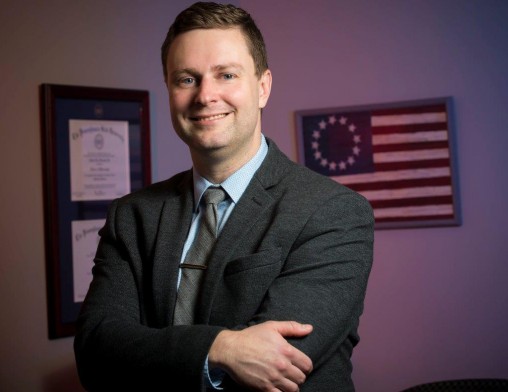Excerpt

Lee Hannah, assistant professor of political science (Photo by Erin Pence)
Uncooperative federal government has led to innovation on marijuana policy in more liberal, less religious states.
In the past two decades, 29 states and Washington DC have liberalized their laws on the use of medical marijuana – in defiance of federal regulations. A. Lee Hannah and Daniel J. Mallinson look at why some states have become ‘defiant innovators’ in this area. They find that if a state is more liberal and less religious, if the state has access to the direct initiative, and if they see other ideologically similar states acting, they are more likely to adopt more liberal medical marijuana policies. By contrast, the position of the federal government and internal fiscal pressure or from citizens had little effect on adoption.
For decades, the federal government has imposed strict regulations and sanctions on the use of marijuana. Yet, since 1996, twenty-nine states and the District of Columbia have acted on their own accord to develop programs that regulate the access to and sale of medical marijuana in explicit defiance of federal law (Figure 1). It is curious that a plurality of state governments and voters have created policies with disregard for federal policy. What inspires them to create policies in direct opposition to federal policy?
We call this phenomenon defiant innovation – a process whereby states, through ballot initiatives or the legislature, pass laws that not only circumvent, but also reimagine, federal law. This is distinct from acts of defiance, like resisting federal mandates, because there is the active creation of a new policy regardless of federal law. And while defiant innovations can occur in other policy areas (e.g. recreational marijuana, issuing benefits to immigrants, etc.), we set out to understand the spread of state medical marijuana programs. Consider that when California voters were considering a medical marijuana ballot initiative in 1996, President Clinton’s drug policy coordinator questioned using “Cheech and Chong logic to guide our thinking about medicine”. And while concerns about medical marijuana policy may seem passé to modern readers, these policies are still viewed as controversies in many local communities tasked with implementing the law. Moreover, twenty-one states have not adopted a medical marijuana program.
Even though the federal government remains steadfast in its official marijuana position, different presidential administrations implicitly and explicitly signal varying approaches to marijuana enforcement. While Attorney General Jeff Sessions is resolute in enforcing the federal prohibition on marijuana, President Obama’s Justice Department provided states some space to experiment with their marijuana programs. That said, Obama faced criticism for the mismatch between his rhetoric and actions due to increased raids on dispensaries during his first term in office. Thus, the implicit and explicit signals sent by the federal government can vary even within administrations.
Meanwhile, states have steadily adopted medical marijuana programs throughout the Clinton, Bush, and Obama Administrations; even in the face of such conflicting federal signals. Figure 2 shows the total number of states that adopted medical marijuana policies (blue line) from 1996 to 2014 and displays separate markers denoting whether laws were passed by the initiative or in the legislature. The earliest adoptions during the Clinton Administration occurred via the initiative. During the Bush Administration, adoptions gradually occurred by both initiative and in the legislatures. And by the time of the Obama Administration, laws were increasingly being passed by the legislature rather than through direct initiative.
Read the entire blog post at blogs.lse.ac.uk

 Milling around
Milling around  Wright State recognizes Nursing Professor Kim Ringo for advancing international student success
Wright State recognizes Nursing Professor Kim Ringo for advancing international student success  Wright State honors graduating students for distinguished doctoral dissertations
Wright State honors graduating students for distinguished doctoral dissertations  Top 10 Newsroom videos of 2025
Top 10 Newsroom videos of 2025  Museum-quality replica of historic Hawthorn Hill donated to Wright State
Museum-quality replica of historic Hawthorn Hill donated to Wright State 